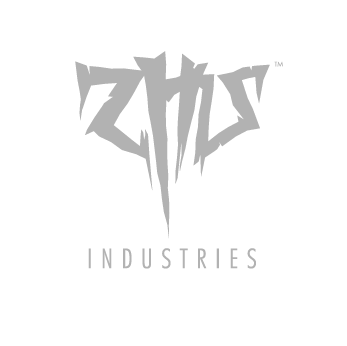 |
| Marching Zombies / Black Cat Mysteries / Rudy Palais 1953 |
 |
| Marching Zombies / Black Cat Mysteries / Rudy Palais 1953 |
And here is the 1977 Monster Manual entry by DCS, just in case your every nightmare isn't already haunted by these freaky creatures:
Rudy Palais drawings of "Marching Zombies" bare little resemblance at all to the popular or folkloric creatures. Instead they seem to be based on the fact that our noses and ears continue to grow long into our old age long after the rest of us stops, so these immortal undead, with their long noses, sunken eyes and elongated ears might simply be the result of extended ageing (something for our off-world transhumanist colonies to consider), and their gaunt emaciated figures from lack of eating. The scaly skin, however isn't so easily explained away.
The story of Marching Zombies itself is, in a word: weird. Two pith-helmeted adventurers are wandering in a desert looking for a lost civilisation when they come across a city of
Moral of the story, never trust a Zombie Troll God.
On a self-referential level, it's also interesting because the Trowes (erm.. 'zombie-trolls') of my Bearoak Campaign are very much undead creatures (loosely based on Algonquian Wendigo fakelore, with an obligatory dash of Beowulf). but I digress...
The nature of Trolls is well documented to have been borrowed wholesale Porl Andersons Three Hearts and Three Lions (which is predated by Marching Zombies by nearly 10 years) - regeneration, fire damage ect - all of which was also lifted wholesale from AD&D by Citadel for Warhammer. None of this appears in Marching Zombies, - it's just the appearance that seems to have been translated. UPDATE: some new information has surfaced on this.
Unlike the pig-faced goons in Walt Disney's Sleeping Beauty (1959) potentially being influential on the pig-faced orcs, the similarities between Rudy Palais zombies and the AD&D Troll here seem more than coincidental. The Coeurl / Displacer Beast is a pretty well known example of TSRs creative borrowing, but it makes me wonder how many classic D&D creatures have their visual origins in earlier incarnations of the weird and uncanny- does the true origins of the Beholder, or a Flumph lurk in some obscure 1950s horror-fantasy comic?
 |
| Otherworld Miniatures Exemplary Troll |
NB. I came across Marching Zombies in Peter Normanton's excellent The Mammoth Book of Best Horror Comics a collection of horror comics from the 1940s to the early 2000s. By necessarily avoiding the EC/DC/Marvel titles, Normanton pulls out some pretty impressive obscure (to me at least) titles. The stories I've read so far are thoroughly entertaining and Normantons commentary really informative. I'd always assumed the Comics Code Authority and the 1950s comic-book burning was just over-zealous right wing American censorship nuttery, but as it turns out there was some really graphic sadomasochistic imagery and gore-fests going on - it wasn't all about weak "Batman and Robin are gay" subtexts - but that publishers were putting out some very adult material in books marketed to children.
Find out more of the mysterious origins of the D&D Troll in TROLLDAWN II




Super cool, Zhu.
ReplyDeleteHmmm, I wonder what "young" trolls look like ;)
That's a cool bit of D&D esoterica you've found Zhu.
ReplyDeleteCheers!
Sorry to drag this 2 year old post from the grave, I'm just discovering the Oldhammer scene.
ReplyDeleteFor the inspiration for D&D trolls, read Paul Anderson's Three Hearts for Three Lions. The description r option, the regeneration. It's all there.
Now, where Paul Anderson got his inspiration... maybe he read 1950s comic books.
Hi Ralph. I do mention Poul Andersons 3H3L in paragraph 7. However, I also wrote a followup article Trolldawn 2 that leads me to believe beyond a doubt that Anderson took his model from this comic (it's far, far too coincidental otherwise).
DeleteHow did I miss that?
DeleteSorry, I'll go and read your follow up now...
What a fascinating glimpse into the origins of the iconic AD&D troll! The idea that the elongated ears and nose are an exageration of human ageing traits is brilliants morbid and creepy. As coincidence would have it, I put one of these minis into the dettol bath a couple of days ago. I can't wait to get it painted and ready to terrorise my players.
ReplyDeleteYes. It was one of those weird coincidences really, having just fancied reading some pre-Comics Code Authority horror comic, and then coming across the Zombie/Trolls. Having started there, I tracked down the 'original' comic and found further Trollish evidence so wrote up a sequel post which sheds further light Troll Dawn 2.
DeleteWill have to get some paint on my Otherworld Troll too!